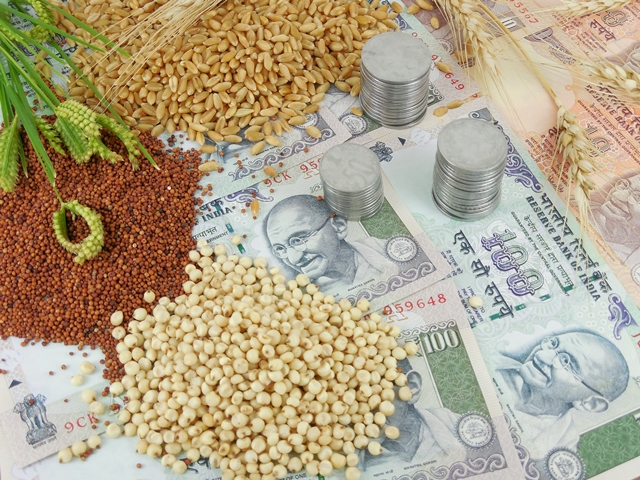 In India, commodity exchanges offer more than hundred commodities for trading and about two-third in the list accounts for agricultural commodities. Though non-agricultural commodities top exchange traded volumes, more corporate participation and physical delivery settlement is happening in agricultural commodities.
In India, commodity exchanges offer more than hundred commodities for trading and about two-third in the list accounts for agricultural commodities. Though non-agricultural commodities top exchange traded volumes, more corporate participation and physical delivery settlement is happening in agricultural commodities.
Commodity exchanges standardize the specifications of commodities delivered on the exchange platformto synergize with the requirement of the industry. Thus, commodity futures encourage standardization of the quality of the produce.
Traders having physical exposure to a specific commodity largely benefit out of futures market. By participating in commodities futures trade, farmers can get an idea of future price outlook and can use the storage and warehousing facilities of commodity exchanges. Increased information and sensitivity towards quality is assisting producers to strive to get upgraded output and meet the requirements of the evolving commodity-supply chains. Corporates can use futures platform to hedge their risk exposure with agricultural commodities. Since the settlement of the trade is guaranteed by the exchange, the participants have increased confidence in the exchange platform.
Agriculture commodities are usually segregated into Cereals and pulses, Fibres, Guar Complex, Plantation products, Oil and oilseeds, Soft commodities and Spice complex.
Under Cereals and Pulses, Barley, Chana, Maize, and Wheat contracts are available for trading. There are Mini contracts for Chana and Kharif & Rabi varieties of Maize contracts are offered focusing different cluster of traders. Chana futures is one of the largest traded agriculture commodity in exchanges in terms of volume. Delivery center for Chana is located at Bikaner, Rajasthan.
Under Fibres, cotton is the most active. For cotton, different variants are available in NCDEX and MCX. High price volatility and global price fluctuations incentivize textile companies to take part in cotton futures market. This helps in active price-risk management and protects their incomes. Delivery center for NCDEX is at Surendranagar, while for MCX it is at Rajkot, both located in Gujarat.
In plantation crops rubber is available for trading through NMCE since its inception. Planters, companies, and other market intermediaries are the regular players.
Under Guar complex, Guar seed and gum is available for trading. Guar seed is the top volume generating commodity in NCDEX platform. Due to its high acceptance among participants, the market regulator has given approval for starting options trading in this commodity.
Oil and oilseeds are highly active due to its international presence and corporate participation. Castorseed, Soybean & Refined Soy oil, Rape Mustard seed & oil and Crude Palm oil are the key listed commodities in this group. Soybean, Soyoil and Crude Palm oil are actively traded international commodities. Hence, extended trading time is facilitated in these commodities as against the normal market timing of agriculture commodities. A large number of importers and exporters are using this derivative platform to hedge their risk exposure in physical market.
Spice complex is another agriculture group available for trading in exchanges. Pepper, Turmeric, Jeera, and Coriander are actively traded in this cluster at NCDEX platform. Cardamom futures is available on MCX platform. Companies, food manufacturing units, spice oil extracting and oleoresin companies, and farmers having physical market exposure, are highly active in spice futures trading.
Posted: April 2018








I am interested in commodity trading.
Hi Thank you for writing to us. Request you to please share your phone number and Geojit’s representative will contact you.
Useful Information, your blog is sharing unique information….
Thanks for sharing!!!
crop value chain management
ranches accounting services
Thank you for your post. This is excellent information. It is amazing and wonderful to visit your site.
Thank you for your post. This is excellent information. It is amazing and wonderful to visit your site.